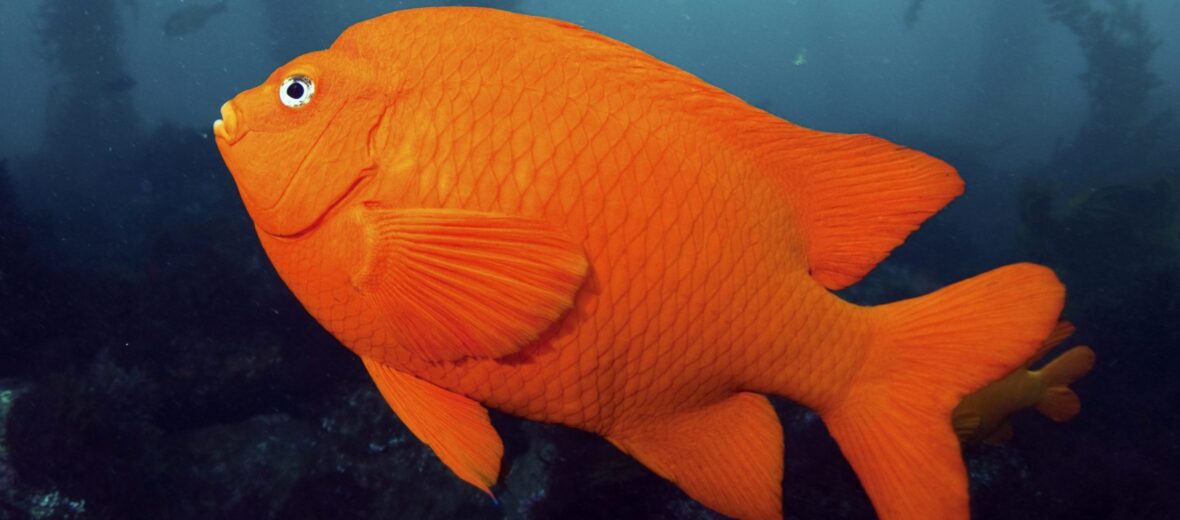
The garibaldi is a member of the damselfish family. They are a California State marine fish and are illegal to keep as pets. These beautiful red-orange fish can be found from Monterey Bay, in California down to Baja California, in Mexico. Garabaldi fish inhabit kelp forests and rock reefs, just off the coastline and down to 100+ feet. This species of fish is abundant, protected, and is therefor listed as Least Concern by the IUCN.
First the Stats…
Scientific name: Hypsypops rubicundus
Weight: Up to 2 lbs.
Length: Up to 15 inches
Lifespan: Up to 17 years
Now on to the Facts!
1.) It is uncertain whether this fish was named after the Italian patriot, Giuseppe Garibaldi, whose army used to wear bright red shirts, or after the woman’s red blouse worn in the 1890s. The debate wages on.
2.) Both males and females are colored bright golden-orange. Juveniles are red-orange and have iridescent blue spots on their body, with a bright blue blotch outlined in black on the upper mid-back, and their fins are outlined in bright blue.
3.) They prey on small anemones, worms, bryozoans, sponges, shrimps, crabs, shellfish, sea stars, and algae. This makes them omnivores (eat plant and animal matter).
4.) The garibaldi is preyed on by larger fish, sharks, seals, sea lions, and bald eagles.
5.) Garibaldi are solitary and very territorial. They can be seen swimming just a few feet away from others of their kind, keeping a close eye on their territory to make sure their hiding nook and food supplies are well protected.
But wait, there’s more on the garibaldi!
6.) Females signal their interest in a male by swimming with all her fins erect. The male tries to woo the female by swimming in loops. At the same time, he will make a low frequency thumping sound by grinding his pharyngeal teeth together. If a female seems interested in the loop-da-loops and teeth grinding, the male will swim to his nest, hoping she will follow suit. The female is very picky, many times visiting around 15 nests before deciding which fella gets to breed with her.
7.) The female is reluctant to lay eggs in an empty nest and will typically only lay eggs in a nest that already has eggs. Sometimes there will be several females lined up to lay eggs in an already taken nest.
Did you know…?
Females have been known to eat their own eggs. Not exactly mother of the year.
8.) Males will sometimes eat freshly deposited eggs in an attempt to attract more females to lay eggs.
9.) Sentimentality isn’t the male’s strong suit. As soon as the female lays her eggs, the male chases her away. Lay down, get up, get out.
10.) Females lay around 1,000 bright yellow eggs that are diligently guarded by the male, till they hatch and disperse into the planktonic population.
Now a Short Garibaldi Video!
Also, check out the Critter Science YouTube channel. Videos added frequently!
Want to suggest a critter for me to write about? Let me know here.



